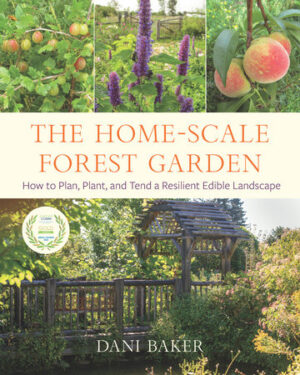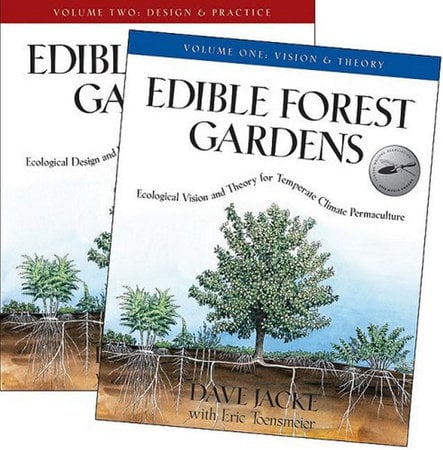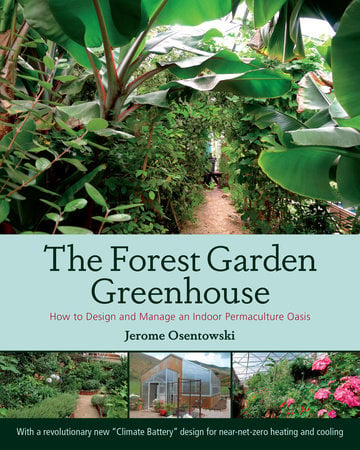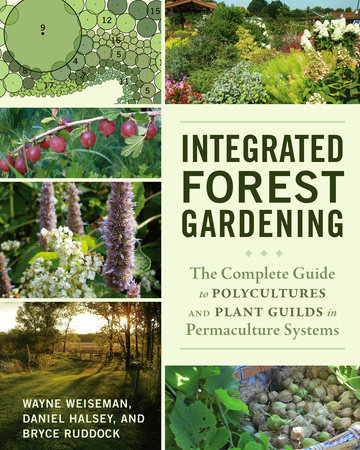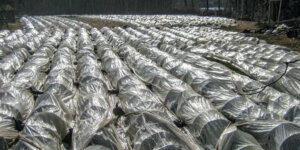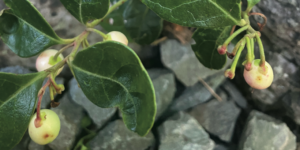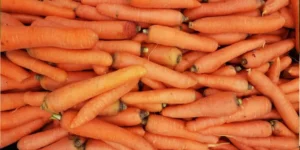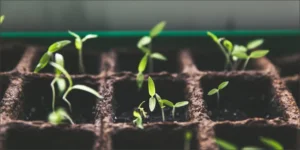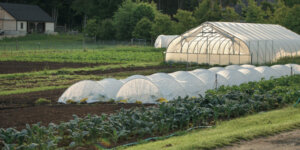Creating A Plant Grouping: Edible Forest Gardens
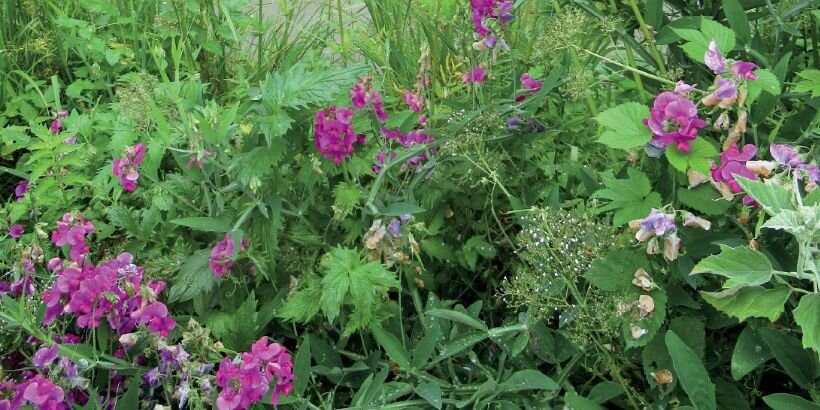
Get one step closer to the edible forest garden of your dreams by creating a plant grouping! These arrangements of plants help contribute to a healthy, thriving food forest.
The following is an excerpt from The Home-Scale Forest Garden by Dani Baker. It has been adapted for the web.
Planning a Plant Grouping
Deciding what plants to group together in a particular spot is one of the most engaging, satisfying, and occasionally frustrating enterprises for forest gardeners—both novices and those with experience.
Those of you who have cultivated perennial flower gardens will appreciate the challenges of arranging long-lived plants in a group in such a way that they work well together over time.
In a forest garden, your goal is to cover the ground completely while also including plants for each layer to fully occupy the vertical space available.
Placing plants with diverse functions in close proximity to one another fosters sustainability.
For example, in addition to food producers, a selection of plants that attract beneficials, concentrate nutrients, and deter pests can form a mutually supportive group in which the needs of each plant are met by the others.
In designing your arrangements, plant characteristics such as growth habit, type of roots, root depth, and light and moisture needs are all important considerations.
Learning About Groupings
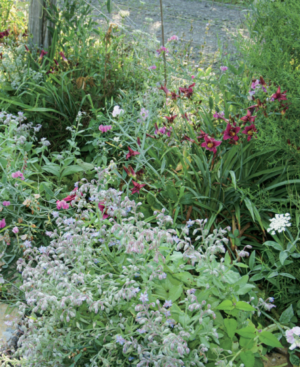
Figure 13.1. An example of herbaceous succession: Daylilies planted below a row of grapevines were joined over time by self-seeded borage, perennial sweet pea, anise hyssop, and wild Queen Anne’s lace.
Making groupings of edible plants is an undertaking that has few tried-and-true models, so it’s good to take an experimental attitude when planning groupings for a forest garden.
Every situation is different, and what works for one gardener may not work for another.
And because the plants are perennial, changing in height and width over the years, the results may take time to reveal themselves.
It is likely that some plants will do well (or too well) in their assigned placements while others will falter.
It’s my hope that the successes and failures I share will spark creative solutions for plant groupings in your own garden design.
How to Make A Plant Grouping
Each type of tree, shrub, or herb, and even each individual species, has a certain habitat preference: the conditions of soil, light, moisture, temperature, climate, and airflow most conducive to its healthy growth.
Determining where to place each plant in a forest garden so that it will be most happy can be a challenge.
As you develop planting plans, the work you have done identifying the microclimates in your plot will be most helpful.
What to Include in A Plant Grouping
How do I decide what to include in a particular plant grouping?
It varies. As a general rule it is important to plan the tallest layers first because the location of these plants will determine the placement of others below.
Sometimes I begin with a single fruit tree and build in shrubs and ground cover plants around it.
At other times I have made a list of plants suitable for a specific habitat, such as shady and moist or sunny and dry, and designed an arrangement of plants selected from that list.
I have installed a row of trees or bushes, embellishing them a year or two later with supportive plants. In many situations, my vision for a grouping evolves with time, and I enlarge a bed to incorporate the plants in my expanded vision.
In all of these cases I concentrate on matching the individual plants with the best possible habitat while considering how each will coordinate with other plants in the group in terms of spacing vertically, horizontally, and over time.
In all of these approaches, there is a good deal of trial and error as I observe how the grouping develops and make adjustments in response over time.
Undisturbed Soil: An Essential Cornerstone
Undisturbed soil, covered with living plants at all times, is the cornerstone of an edible perennial garden.
At first, the task of covering the 40,000 square feet (3,700 m2) of ground in my garden with edible ground cover plants seemed daunting, if not insurmountable.
And as things turned out, for the first few years I was preoccupied with completing the woody layers of my initial forest garden and then planning and planting the garden expansion.
For the most part, I did not include edible ground covers in my original plans.
Rather, I kept the ground covered with frequently replenished quantities of mulch until I was ready to install herbaceous plants and ground covers.
Addressing the Ground Cover
There are three ways to address the ground cover layer in a forest garden planting.
If you have a small plot, you can plant all the layers, including the ground cover, at once.
In a larger plot, you can do the same thing in sections: Sheet-mulch or otherwise prepare one manageable area at a time, plant that area completely, and then proceed to the next section.
Depending on the size of your plot, it may take you several weeks, months, or even years to execute your entire garden plan.
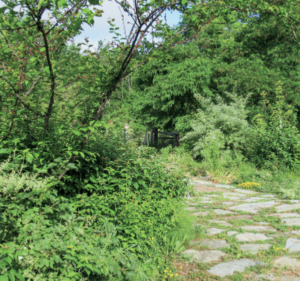
Figure 13.2. Multiple layers and types of plants increase the garden’s resilience and self-sustainability while creating a landscape that is lush and inviting for humans.
I chose a third approach.
Importance of Ground Covers
I first planned and planted the entire overstory and understory layers of my forest garden.
Next, I incorporated the shrub layer, and finally I added in the herbaceous and ground cover layers.
As I write this manuscript, I am still completing the final step by creating planting beds around existing trees and shrubs.
By sheet mulching one or more new sections each year, and incorporating ground covers there during the following growing seasons, I am covering the ground with an ever-expanding blanket of intended plants.
What once seemed like a Herculean task is made possible by breaking the work down into manageable parts.
Grouping Plants for Sustainability
I want to emphasize yet again how important it is to maximize diversity as you decide what to plant, in terms of both types of plants and the vertical layers they occupy.
Mixing plants of different heights and types makes it more difficult for pests and diseases to locate their hosts and spread widely.
Greenery in all vertical layers offers beneficial animals and insects the maximum diversity of habitats in which to live, breed, and forage for food.
Diversity also ensures a better balance in the soil ecosystem, as different species of plants take up nutrients in varying amounts and proportions.
Considering Root Structure
Mixing together plants with different types of root structures maximizes the presence of living roots from the topsoil down into the subsoil, while minimizing root competition among plants.
As you plan your groupings, consider the root structure of the plants you want to incorporate and try to avoid clustering together plants whose roots might compete for space, water, or minerals in the same layer of soil.
There are several categories of plants that contribute to a garden’s diversity while providing essential self-sustaining services, including nitrogen fixation and accumulation of other nutrients, attracting beneficial, and deterring pests.
Even though some of these plants aren’t food plants for humans, they are important components of an edible forest garden that you will want to include in your design.
Recommended Reads
Recent Articles
Want to grow year-round, but a greenhouse feels like a big investment? When it comes to cost and flexibility, low tunnels are the all-around winners.
Read MoreWintergreen is the stunning evergreen groundcover that’s a game-changer for your garden! It’s cherished for its aromatic leaves, vibrant fall color & bright berries.
Read MoreGrow winter carrots for a sweeter & more flavorful harvest! Ditch the bland, store-bought carrots this winter! Grow your own winter carrots for a sweeter and more flavorful twist 🥕🥕
Read MoreSearching for the perfect book to give the homesteader in your life? We’ve got your go-to books for anyone interested in organic growing, permaculture, soil health, year-round growing & more! What’s their next great read?
Read MoreWinter is coming… but that doesn’t mean you should put away those tools just yet. Extend the growing season well past the first frost!
Read More

